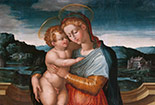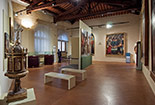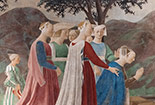The Casa Vasari Museum
in Arezzo, Tuscan art city that you can know in every detail with this website
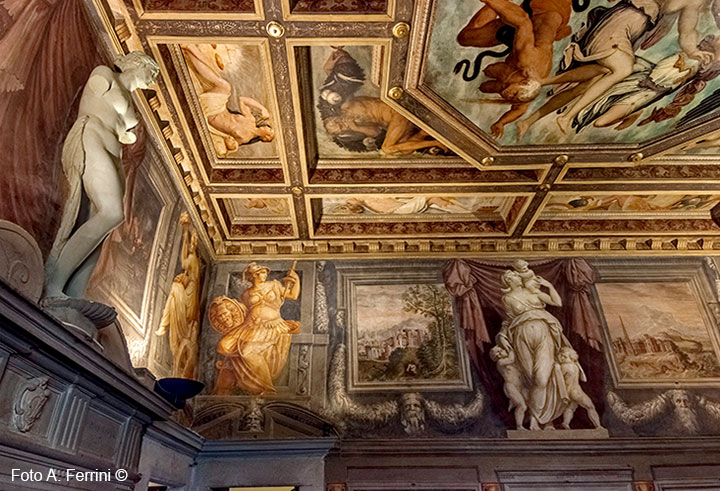
Texts and photos by Alessandro Ferrini ©
27 accurately described images of Arezzo. Click to enlarge
Giorgio Vasari's house. A Renaissance museum in Arezzo
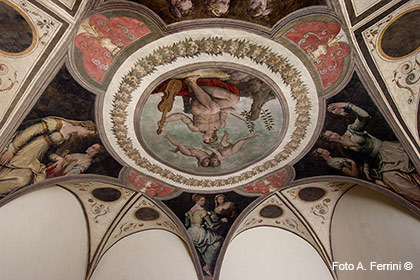 Giorgio Vasari was certainly a prominent figure in the Italian Renaissance, especially in Tuscany. He was a great Mannerist painter and architect, but in parallel with these two sectors for which he is best known he was an art historian and man of letters.
Giorgio Vasari was certainly a prominent figure in the Italian Renaissance, especially in Tuscany. He was a great Mannerist painter and architect, but in parallel with these two sectors for which he is best known he was an art historian and man of letters.
Giorgio Vasari was born in Arezzo on 30 July 1511 in a house a stone's throw from Piazza Grande, that medieval square to which Vasari, commissioned by Cosimo I De 'Medici, will give in the last years of his life (he died in Florence on 27 June 1574) also a clear Renaissance style with the design and construction of the large loggias that bear his name. He also designed the left part of the building of the Fraternita dei Laici, a work that will only see its completion in the 17th century.
In addition to these architectural works, in Arezzo we can also admire the great pictorial talent of Giorgio Vasari in large panels that are preserved in the Church of Santa Flora and Lucilla della Badia di Arezzo, in the nearby Church of the Santissima Annunziata and in the nearby Museum of Medieval and Modern Art.
But the place where we can feel most strongly "enveloped" by Vasari's art is his Arezzo house, located in Via XX Settembre, not far from Piazza San Domenico. This is not his birthplace which was, as mentioned above, near Piazza Grande, but a house that Vasari bought in 1541 for seven hundred gold florins when its construction had just begun so that he could develop it at his own pleasure. A house that Vasari wanted to be able to continue living from time to time also in his Arezzo, a city to which the artist always remained very attached, despite his friendship with the Medici and his great architectural and pictorial works made for Florence, as well as his periods spent in cities such as Rome, Naples, Bologna and Venice where he carried out important works.
A house outside the center of Arezzo, a house that made him breathe the air of the countryside and "among the gardens" as Vasari himself says. A house in which the great artist carried out a work of decoration for several years in the moments that he took breath from his hectic life full of commitments and movements. Paintings that have come down to us very well preserved and which today have allowed this house to be transformed into the Casa Vasari Museum in Arezzo.
The frescoes and paintings on wood that decorate the six rooms of the house show biblical and mythological scenes, sacred and profane allegories, his "colleagues" painters. They make his home the highest synthesis of his art and his thought, they enhance the artist's role as a great actor of the Renaissance period.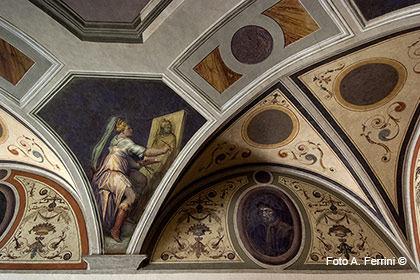 Originally this house had an almost square plan and the facade was shorter than today. The ground floor was used as a warehouse. On the first floor lived Giorgio Vasari and his wife Niccolosa Bacci who, according to tradition, be portrayed among the ladies painted in what is called the Hall of Apollo and the Muses. On the second floor lived the servants and Pietro, an uncle of Giorgio who had the job of tidier during the long periods in which the artist was absent.
Originally this house had an almost square plan and the facade was shorter than today. The ground floor was used as a warehouse. On the first floor lived Giorgio Vasari and his wife Niccolosa Bacci who, according to tradition, be portrayed among the ladies painted in what is called the Hall of Apollo and the Muses. On the second floor lived the servants and Pietro, an uncle of Giorgio who had the job of tidier during the long periods in which the artist was absent.
When Vasari died, the house was inherited by the members of his family. In 1687, with the death of Francesco Maria, the last member of the family, by the will of Giorgio, the house passed to the Fraternity of the Laity of Arezzo who had had a great relationship with the artist also for having helped him financially after his father's death in 1527 In 1911, the fourth centenary of Vasari's birth, the house was bought by the state. In the fifties the historic residence was enriched with a picture gallery composed of some paintings by Vasari, those who were his collaborators and other artists close to his style. The house can therefore be defined as a museum dedicated to mannerism.



